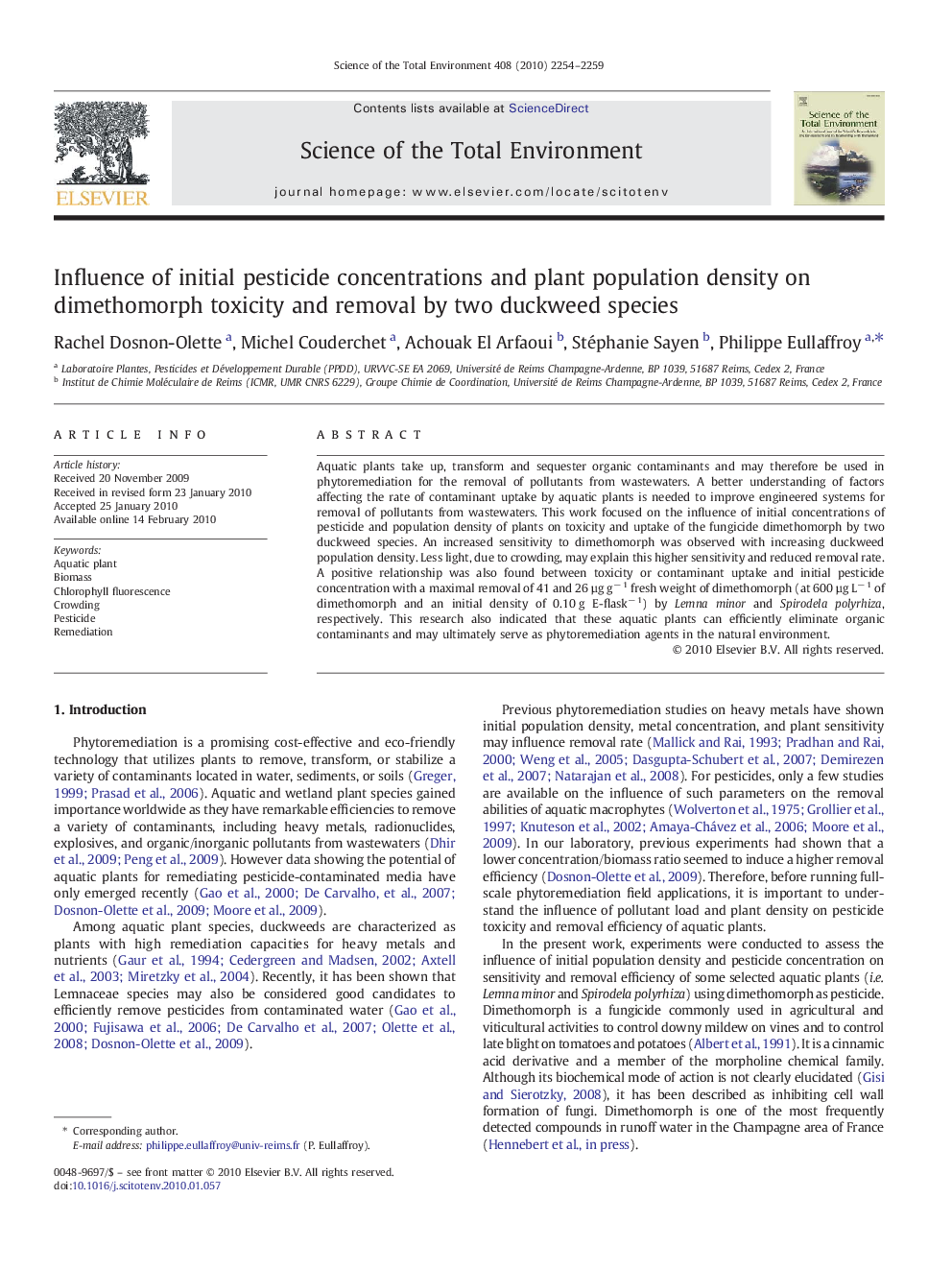| کد مقاله | کد نشریه | سال انتشار | مقاله انگلیسی | نسخه تمام متن |
|---|---|---|---|---|
| 4431688 | 1619876 | 2010 | 6 صفحه PDF | دانلود رایگان |

Aquatic plants take up, transform and sequester organic contaminants and may therefore be used in phytoremediation for the removal of pollutants from wastewaters. A better understanding of factors affecting the rate of contaminant uptake by aquatic plants is needed to improve engineered systems for removal of pollutants from wastewaters. This work focused on the influence of initial concentrations of pesticide and population density of plants on toxicity and uptake of the fungicide dimethomorph by two duckweed species. An increased sensitivity to dimethomorph was observed with increasing duckweed population density. Less light, due to crowding, may explain this higher sensitivity and reduced removal rate. A positive relationship was also found between toxicity or contaminant uptake and initial pesticide concentration with a maximal removal of 41 and 26 µg g− 1 fresh weight of dimethomorph (at 600 µg L− 1 of dimethomorph and an initial density of 0.10 g E-flask− 1) by Lemna minor and Spirodela polyrhiza, respectively. This research also indicated that these aquatic plants can efficiently eliminate organic contaminants and may ultimately serve as phytoremediation agents in the natural environment.
Journal: Science of The Total Environment - Volume 408, Issue 10, 15 April 2010, Pages 2254–2259